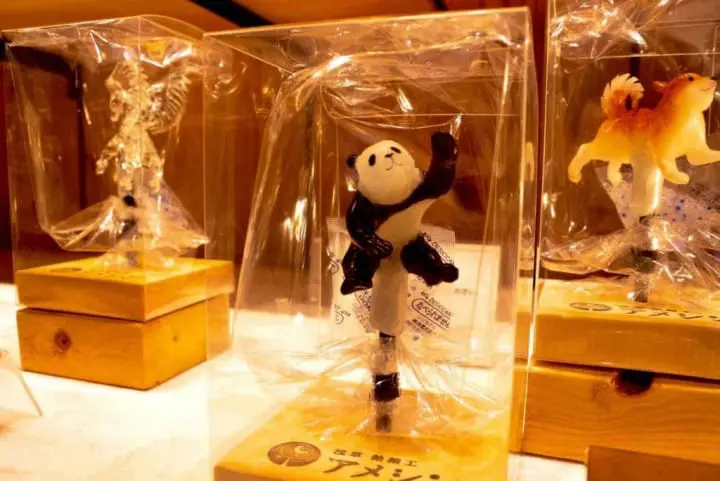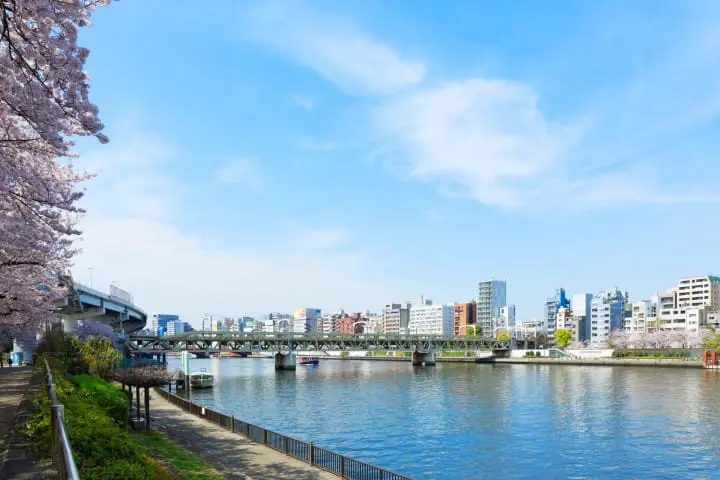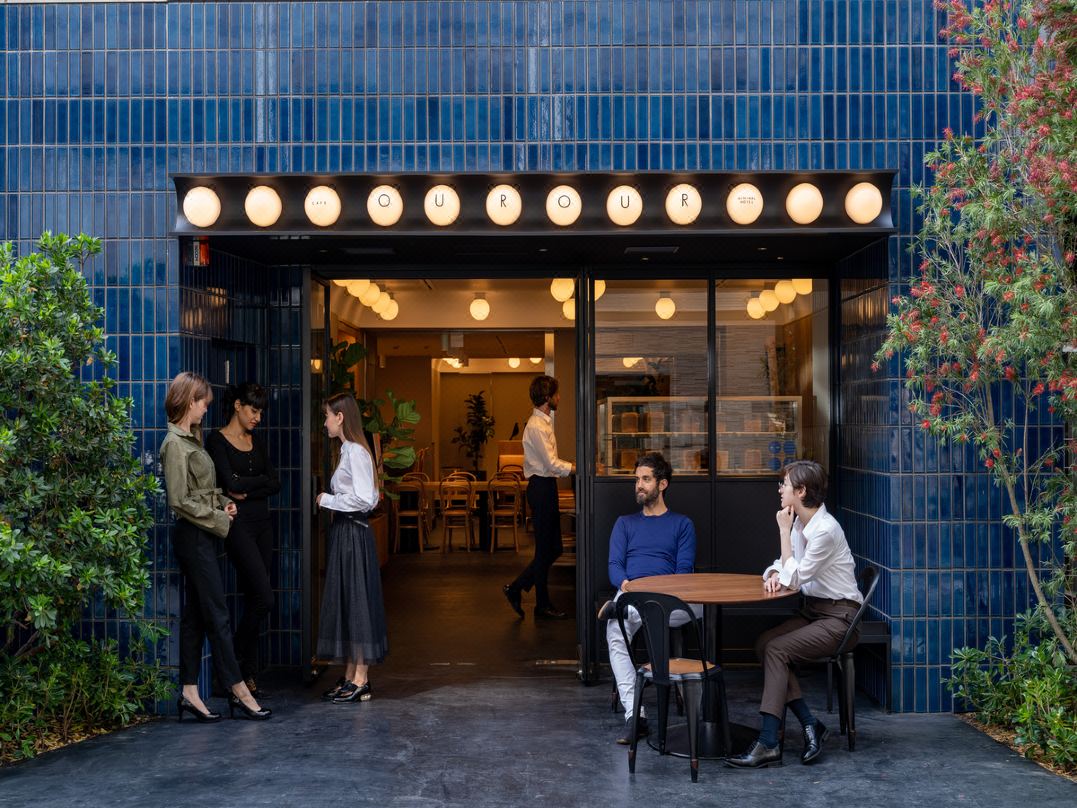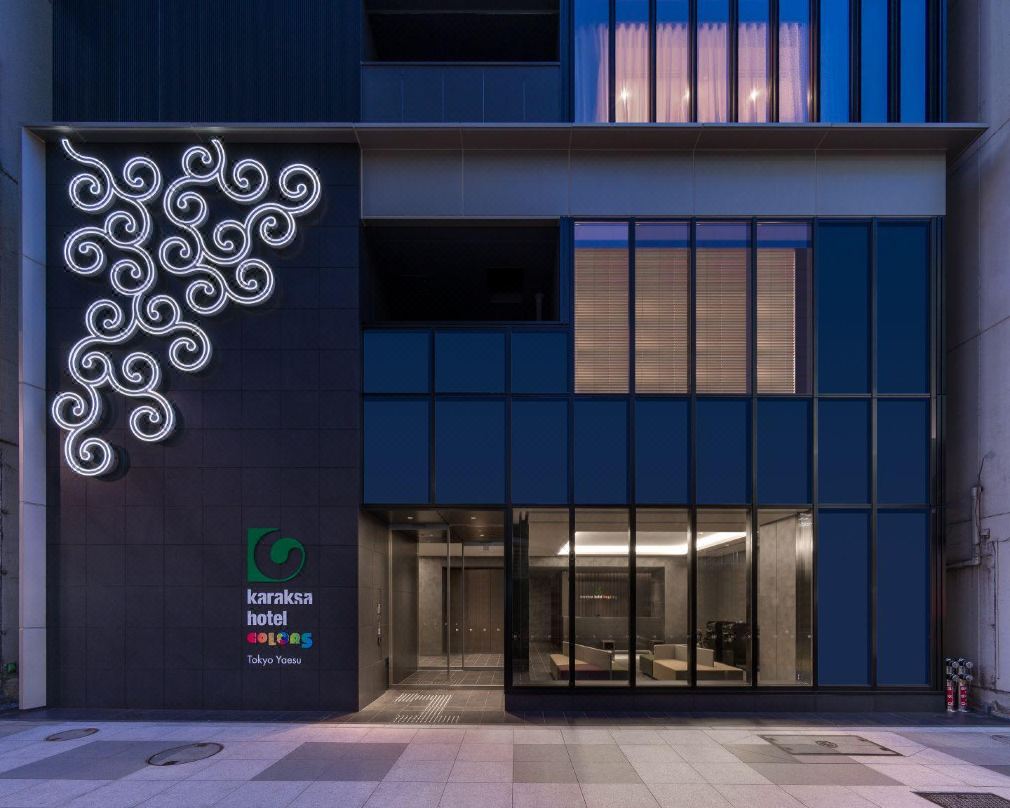20 Things to Do Near Tokyo Skytree: Sumo, Museums, and More in Sumida

Sumida, next to Asakusa, is a Tokyo area with many sightseeing and cultural landmarks, including those lesser-known. From Tokyo Skytree and the Kokugikan Sumo Hall to small shops and parks, there is much to see and do. Find out 20 unique activities to enjoy in this neighborhood.
20 Sumida Activities - See Tokyo Skytree and Lesser-Known Spots

Top-right photo by Pixta
Sumida Ward is an eastern part of Tokyo, located next to Asakusa, across the Sumida River. It is most known to travelers for major landmarks like Tokyo Skytree and Kokugikan, the sumo wrestling stadium. However, this historic Tokyo neighborhood has many unique, hidden destinations to discover that will please all. It also has a relaxed atmosphere compared to other popular areas in the metropolis.
This article introduces 20 things to do in Sumida, from well-known sites to local cafes and Japanese gardens. These spots are great to visit after going to Asakusa, or can even take a full day for exploring.
Sumida Things To Do
Tokyo Skytree Area
1. Tokyo Skytree - Climb Japan's Tallest Tower
2. Tokyo Solamachi - Shop and Dine by Skytree
3. Salon De Sweets - Challenge Yourself to All-You-Can-Eat Dessert
4. Amezaiku - Delight in Japanese Candy Artwork
5. Postal Museum Japan - Learn About Japan's Mail Sytem
6. Oshinari Park - Stroll Down the Skytree Canal
Ryogoku and Kinshicho Areas
7. Kokugikan - Experience a Sumo Match
8. Chanko Nabe - Eat Like a Sumo Wrestler
9. Edo-Tokyo Museum - Discover Tokyo's Past
10. Hokusai-Related Spots - See "The Great Wave" Artist's Hometown
11. Former Yasuda Gardens - Appreciate Traditional Gardens
12. Yokoamicho Park - Encounter Tokyo's Recent History
13. Mikokuyu - Dip into a Japanese Bath
14. Kameido Tenjin Shrine - Go to a Shrine Famous for Flowers
Sumida River Area
16. Sumida River Fireworks Festival - Take in a Spectacular Show
17. Asahi Building - Unwind with Japanese Beer
18. Sumida Park - Enjoy Greenery by the River
19. ASICS Cafe - Healthy Dining by the River
20. Mukojima Hyakkaen Gardens - Walk through a Tunnel of Clover
1. Tokyo Skytree - Climb Japan's Tallest Tower

At 634 meters (2,080 feet), Tokyo Skytree is the tallest tower in Japan. Built 2006, the tower has two observatories offering commanding views of the city and greater Tokyo area. Depending on the weather, visitors can even catch glimpses of Mt. Fuji. The night view is also a must-see.
The observatories at Tokyo Skytree are located at 350 meters (1,148 feet) and 450 meters (1,476 feet). Guests can purchase a combined ticket for both levels or separate tickets for their preferred level. There are a restaurant and cafe from which visitors can take in the stunning view day or night, and a gift shop selling Tokyo Skytree souvenirs.
For more information on ticket prices and operating hours, please see the official Tokyo Skytree website. Visitors with a non-Japanese passport can purchase tickets at the Fast Skytree Ticket area, located on the 4th floor (west entrance).
Hotels near Tokyo Sky Tree
2. Tokyo Solamachi - Shop and Dine near Skytree

Tokyo Solamachi is a shopping, dining, and amusement complex part of the built-up area located at the base of Tokyo Skytree. Inside, visitors will find over 300 businesses, including shops, eateries, and a planetarium.
For shopping, popular Japanese apparel brands, Hello Kitty and Sanrio character merchandise shops, a 100-yen shop, and a variety of other stores line the floors here. There is also a store selling Tokyo 2020 Olympics merchandise that would make a special souvenir.
Several restaurants are located on the upper levels, with casual choices like ramen and conveyor belt sushi, to fine dining establishments on the 30th and 31st floors with views of Tokyo Skytree.
Refer to the official website for more information on the hours and what you can find at Tokyo Solamachi.
Hotels near Tokyo Solamachi
3. Salon De Sweets - Challenge Yourself to All-You-Can-Eat Dessert

Picture from All-You-Can-Eat Dessert Spree At Tokyo Skytree's Salon De Sweets!
Salon De Sweets is an all-you-can-eat buffet with decadent desserts, located on the 6th floor of Solamachi. The shop operates during lunch and dinner hours and stays open until 23:00, so guests can satisfy sweets cravings nearly any time of day.
The offerings depend on the season, but there are a variety of cakes, Japanese sweets, along with savory options, vegetables, and salad. If you can't decide on what to eat for a meal but want your fill of desserts, be sure to stop by this adorable restaurant.
4. Ameshin - Delight in Japanese Candy Artwork

Picture from Edible Traditional Craftwork! Amezaiku Candy At Tokyo Skytree
For a colorful and sweet experience, head to Ameshin, a candy shop specializing in amezaiku, a traditional Japanese craft involving sugar sculpting. This method is thought to have flourished as entertainment during the Edo era (1603 - 1868).
Ameshin is located inside Tokyo Solamachi on the 4th floor. Depending on when you visit, you can watch the imaginative candy art being made by craftspeople.
5. Postal Museum Japan - Learn About Japan's Mail Sytem

Picture from Postal Museum Japan - See 330.000 Kinds Of Stamps At Tokyo SkyTree!
Postal Museum Japan is a museum that provides an out-of-the-ordinary experience to visitors, located on the 9th floor of Tokyo Solamachi. The facility features colorful displays with information on the history and system of Japan's mail with English and foreign language explanations. Be sure to visit The World of Postage Stamps, which has around 330,000 types of postal stamps on display.
There is also a playful video game where visitors can try experiencing driving and delivering the mail on a motorbike, like a postal person in Japan. The museum is an excellent destination for those traveling with families or children.
6. Oshinari Park - Stroll Down the Skytree Canal

Oshinari Park is a small park running along the Kitajuken River by Tokyo Skytree. The path by the river is lined with greenery and flowers and provides relief from the bustle of Skytree and the surrounding shopping complexes.
Come here for a walk or enjoy a snack on a bench to relax during the day. Different flowers bloom and decorations line the walkways year-round. In the evening, the area is illuminated, creating an enjoyable, ethereal atmosphere.
7. Kokugikan - Experience a Sumo Match

The Ryogoku Kokugikan is a national sumo hall established in 1909. The national arena hosts the Gran Sumo Tournament, three major sumo competitions in January, May, and September, so advanced planning is necessary to see a match here. Be sure to check the official website (Japanese) for instructions on tickets.
However, the venue also houses the Sumo Museum, which guests can enter for free (closed on weekends and public holidays). The museum displays information and exhibits on the history and development of sumo in Japan and is a great way of learning about this traditional sport if you can't see a match.
Hotels near Kokugikan
8. Chanko Nabe - Eat Like a Sumo Wrestler

Visitors can have a taste of what sumo wrestlers typically eat with chanko nabe, a hearty and nutritious hot pot dish. This stew-like hot pot typically contains plenty of vegetables, tofu, fish, and meat, seasoned simply with soy sauce, rice wine, and dashi. The dish is very healthy and can be shared between diners.
With its close proximity to the Kokugikan, there are many restaurants near Ryogoku Station serving up this voluminous dish. Recommendations include Chanko Tomoegeta and Chanko Kirishima, two eateries with high-quality, delicious nabe within walking distance of Ryogoku Station.
Read also
9. Edo-Tokyo Museum - Discover Tokyo's Past

Plan to spend a couple of hours at the Edo-Tokyo Museum with its educational and intriguing displays on the history of Japan's modern capital. This spacious, multi-level museum houses permanent and seasonal exhibits relating to all things Tokyo.
The permanent exhibits showcase Tokyo when it was known as Edo, and the capital's development since then, including 20th century and World War II history. In particular, the reconstructed rooms from Japanese homes in different eras are greatly detailed. This facility will entertain even young visitors.
*2024 update: The Edo-Tokyo Museum is currently closed for renovations until the spring of 2025. The exhibits can be explored via Hyper Edohaku, a free digital app available for download from both the App Store and Google Play.
10. Hokusai-Related Spots - See "The Great Wave" Artist's Hometown

Katsushika Hokusai is the ukiyo-e artist behind the iconic "The Great Wave off Kanagawa" from the Thirty-Six Views of Mount Fuji collection. He was born and resided what is now the Sumida area for most of his life.
As such, visitors can visit many Hokusai-related places in Sumida, including the must-see Sumida Hokusai Museum. In addition, visitors can see some of the real-life subjects of his paintings, like the Ryogoku Bridge connecting Sumida to the Nihonbashi area.
11. Former Yasuda Garden - Appreciate Traditional Gardens

The Former Yasuda Garden, or Kyu-Yasuda Teien, is a traditional Japanese garden that dates back to the Edo period. It has undergone reconstruction since it was established but is a distinguished garden in Tokyo. Due to its slightly hidden location, it receives relatively few visitors. Admission is free.
Its central pond is shaped like a heart, and the Tokyo Skytree is visible from the grounds. Be sure to stop by for a short stroll and pictures when visiting the Ryogoku area. The Japanese Sword Museum is located next door to the gardens and is another option for those with extra time.
Hotels near Sumida Ward Former Yasuda Garden
12. Yokoamicho Park - Encounter Tokyo's Recent History

Another flora- and history-filled area to see in Sumida is Yokoamicho Park. This city park is known for its large hall with exhibits on the destructive Great Kanto Earthquake in 1923, and outdoor memorial to victims of the Tokyo air raids from the United States during World War II.
In addition to the history to be seen and learned, the park itself is very serene and contains a small Japanese-style garden with a koi pond.
13. Mikokuyu - Dip into a Japanese Bath

Picture from 11 Recommended Hot Springs In And Around Tokyo
Sumida's Mikokuyu is where visitors can experience Japanese-style bathing in sento, or public baths. The facility houses multiple public baths, including Japanese cypress baths and Hokusai-style rooms with ukiyo-e style paintings. The semi-outdoor baths have a lovely view of Tokyo Skytree.
For general tips on how to use public baths in Japan, please view the article listed below.
Read also
14. Sumida Coffee - Stop by a Local Cafe

Sumida Coffee is an ideal spot for those looking for a local, friendly cafe to rest at after a day of walking. This cozy cafe is known for its coffee served in traditional Edo Kiriko glasses.
The coffee beans are roasted in-house, resulting in flavorful, high-quality cups that will please all taste buds. Snacks and desserts, like coffee-flavored soft serve, are a delicious pick-me-up in the mid-afternoon.
15. Kameido Tenjin Shrine: Famous for Flowers

Kameido Tenjin Shrine is a prominent Shinto shrine in Sumida. The delicate plum blossoms and wisteria that bloom on its grounds attract many visitors each year. In February, one can view the deep pink plum blossoms, and gorgeous wisteria trellises and planters in April and May. In October, chrysanthemums, the symbol of the Imperial House, bloom here, too.
The shrine also has a gorgeous red bridge in the middle of the grounds. As Tokyo Skytree is visible in the background, don't forget to take a picture when visiting.
16. Sumida River Fireworks Festival - Take in a Spectacular Show

The Sumida River Fireworks Festival is one of the largest summer firework displays in Tokyo and eastern Japan. Held annually in late July, the festival has around a 400 year-history. The fireworks are launched off of boats on the Sumida River after dark, and numerous food stalls in the area open, offering traditional festival treats.
The festival will run from 19:00 to 20:30 on Saturday, July 27, 2019. Fireworks are a summer tradition in Japan, and this is a must-see Tokyo event.
Read also
17. Asahi Building - Unwind with Classic Japanese Beer

Asahi, the domestic beer and beverage manufacturer, has its headquarters by the riverside of Sumida, across from Sensoji Temple in Asakusa. The complex for Asahi is recognizable by the golden flame sculpture on the Super Dry Hall, one of the buildings.
Visitors can learn about this internationally-known company's history, and end the evening with a refreshing glass of domestic beer. There is a restaurant where diners can enjoy a hearty meal paired with different brew styles of Asahi, including craft brews.
Read also
18. Sumida Park - Enjoy Greenery by the River

Photo by pixta
Located on both the Asakusa and Sumida banks of the river, Sumida Park is a nature-filled park known well to locals. Runners and those exercising in the area often pass by or stop in the park, too.
In April, the park is a popular place to view the cherry blossoms. During other months, it is a nice place to enjoy nature and the peaceful river scenery with a drink in hand.
19. ASICS Cafe - Healthy Dining by the River

Vegan donuts and muffins from ASICS CONNECTION TOKYO
For health-minded travelers, head to ASICS CONNECTION TOKYO, a cafe and fitness studio run by Asics. The cafe carries healthy vegan snacks and meals, and the upstairs of the facility contains lockers available for rent, and a yoga studio.
If you are planning on jogging or walking along the Sumida River, you can leave your belongings at the lockers and enjoy the riverside scenery while you exercise.
20. Mukojima Hyakkaen Gardens - Walk through a Tunnel of Clover

Mukojima Hyakkaen Gardens is a Japanese garden with gorgeous flowers and plants blooming throughout the year. Its name, hyakkaen, or "one hundred views" refers to this floral bounty. The garden is thought to be one of the few remaining flower gardens from the Edo period.
When visiting, be sure to walk through the clover tunnel that will enclose you in a green, lush tunnel of the delicate flower. This is a unique garden where you can experience the beauty of Japanese nature in the middle of Tokyo.
FAQ
Which is better, Tokyo Tower or Skytree?
When comparing Tokyo Tower and Tokyo Skytree, two iconic landmarks in Tokyo, each offers a unique experience for visitors. Tokyo Tower, with its historical significance dating back to 1958, symbolizes post-war recovery and remains a cherished symbol in the city center, providing views of Tokyo's central landmarks and districts. In contrast, Tokyo Skytree, completed in 2012, stands as Japan's tallest structure, embodying modern architectural marvel with a blend of traditional and contemporary design elements. The Skytree's observation decks offer sweeping panoramic views of Tokyo and its surroundings, including Mount Fuji, in a setting that showcases innovative engineering and intricate lattice structure. Choosing between Tokyo Tower and Tokyo Skytree depends on individual preferences, whether for historical charm and central location (Tokyo Tower) or modern design, height, and expansive views (Tokyo Skytree), as both landmarks offer distinct perspectives of Tokyo's beauty from above.
Is it worth going up Tokyo Skytree?
A visit to the Tokyo Skytree is highly recommended for those seeking a memorable and panoramic view of Tokyo. As Japan's tallest structure, the Skytree provides unparalleled vistas of the city's skyline, landmarks, and even Mount Fuji on clear days. Beyond its impressive height, the tower serves as an iconic symbol of Tokyo, blending tradition and innovation in its architectural design. Visitors can immerse themselves in Japanese culture through the exhibits and experiences offered at the tower. Additionally, the complex boasts a variety of shopping, dining, and entertainment options, ensuring a well-rounded and enjoyable visit for individuals of all interests. Whether during the day or at night, a trip to the Tokyo Skytree promises a unique and awe-inspiring experience, making it a must-visit destination for those exploring the vibrant city of Tokyo.
What is special about the Tokyo Skytree?
Tokyo Skytree, Japan's tallest structure and a significant architectural marvel, holds a special place as an iconic landmark in Tokyo. Standing over 600 meters tall, it offers unparalleled panoramic views of the city and surrounding areas from its observation decks. The tower's design incorporates a blend of modern technology and traditional Japanese aesthetics, featuring a lattice structure inspired by ancient pagodas. Beyond its architectural beauty, the Tokyo Skytree serves as a cultural symbol, embodying Japan's technological advancements and rich heritage. Welcoming visitors from around the globe, the tower has become a popular tourist destination known for its breathtaking views, diverse shopping opportunities, dining experiences, and entertainment offerings, making it a must-visit attraction that captures the essence of both modernity and tradition in Tokyo.
Which is better Tokyo Skytree or Shibuya Sky?
The Tokyo Skytree and Shibuya Sky in Tokyo present distinct experiences for visitors seeking panoramic views of the city. The Tokyo Skytree, located in Sumida, stands as one of the tallest structures globally, offering sweeping vistas of Tokyo's landscape, landmarks, and even Mount Fuji on clear days. Beyond views, the complex provides shopping, dining, and entertainment options, making it a comprehensive destination. On the other hand, Shibuya Sky, situated in the bustling Shibuya district, focuses on offering unique perspectives of the lively Shibuya Crossing, capturing the dynamic energy and essence of urban life in Tokyo. While the Tokyo Skytree is renowned for its towering height and impressive cityscapes day and night, Shibuya Sky appeals to those interested in observing the organized chaos of Shibuya from above, highlighting Tokyo's vibrant urban pulse. Choosing between the two is a matter of preferences, with the Tokyo Skytree catering to panoramic city views and the Shibuya Sky offering an urban-focused experience centered around Shibuya's iconic crossing.
Is it better to go to the Tokyo Skytree at night or day?
Visiting the Tokyo Skytree, Japan's iconic broadcasting tower, offers distinct experiences whether during the day or night. Daytime visits provide clear panoramic views of Tokyo's skyline, allowing for detailed observations of the city's layout, landmarks, and even Mount Fuji on clear days. The visibility in daylight enhances the overall visibility, making it ideal for appreciating Tokyo's architectural wonders and surrounding landscapes. In contrast, nighttime visits offer a magical spectacle as the city lights illuminate the skyline, creating a colorful and vibrant display that is particularly enchanting. The nighttime ambiance provides a romantic setting and picturesque scenes for photography enthusiasts, offering a different perspective of Tokyo's splendor under the night sky. Whether choosing daytime or nighttime, a trip to the Tokyo Skytree promises an unforgettable experience with breathtaking views of Tokyo's beauty in both daylight and nighttime settings.
What is Sumida?
Sumida is a special ward located in Tokyo, Japan. Known for its blend of traditional and modern attractions, Sumida offers a mix of cultural, historical, and recreational experiences for residents and visitors. One of Sumida's most famous landmarks is the Tokyo Skytree, a towering broadcasting tower and observation deck that provides panoramic views of the city. Sumida is also home to the historic Asakusa district, known for attractions like Sensoji Temple, Nakamise shopping street, and traditional festivals like the Sanja Matsuri. Additionally, Sumida boasts scenic waterfront areas along the Sumida River, where visitors can enjoy leisurely walks, boat cruises, and views of the city skyline.
See a Different Side of Tokyo in Sumida!
Located close to Asakusa and home to Tokyo Skytree, travelers in Sumida may see only the most well-known destinations and end their visit early. However, Sumida contains an old, historic Tokyo atmosphere, providing a less-common experience full of surprises.
Sumida is also an ideal place to lodge, as its peaceful atmosphere allows travelers to recover from a busy day in Tokyo. It is convenient to access Narita and Haneda airports from Sumida.
Whether you stay a half-day or base your Tokyo trip in Sumida, be sure to venture off the beaten path to discover a more local side of Japan's metropolis.
Read also
Main image by Pixta
An awkward Southern California native living in Osaka. Originally came to Japan on the JET Program in Hyogo Prefecture (Kansai) after studying economics in college, and decided to try to stay.
IUC 10-month program graduate. Vegan and interested in all things Japan-related. Left-handed. Very fond of Kansai.





































































![[Coupon Available] Attention Overseas Winter Sports Fans! Nagano's Sports Depot Has Evolved](https://resources.matcha-jp.com/resize/720x2000/2026/01/05-254819.webp)
![[2 hours from Tokyo ] 10 Quiet and Breathtaking Views of Mount Fuji in Yamanashi Hokuto City , Yamanashi - Part 2](https://resources.matcha-jp.com/resize/720x2000/2025/12/16-253037.webp)

![[Reopening in March 2026] Ikoma Sanjo Amusement Park Park, 45 minutes from Osaka , with free admission](https://resources.matcha-jp.com/resize/720x2000/2024/08/28-194409.webp)